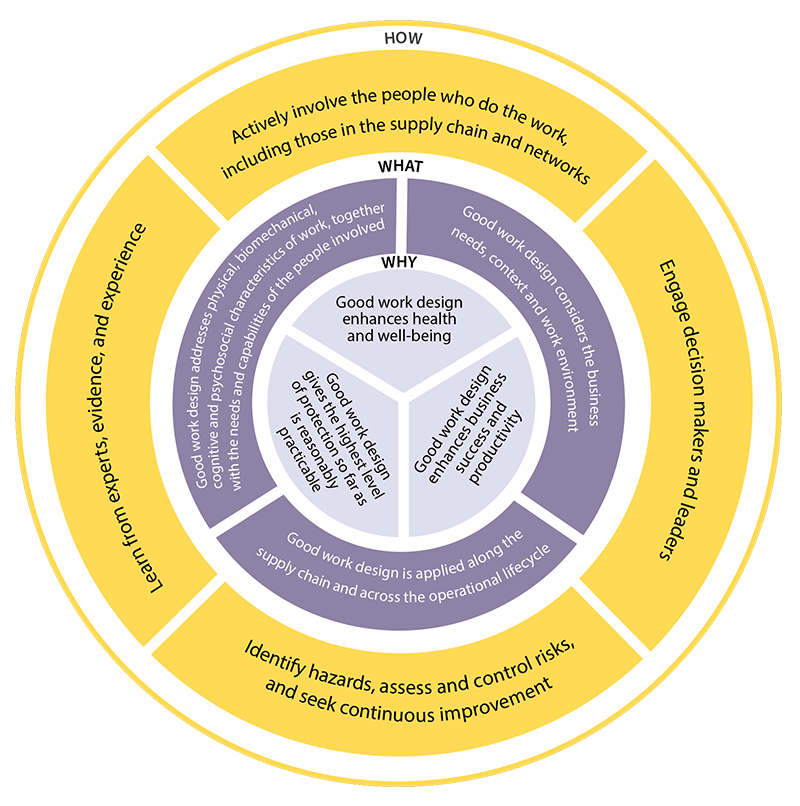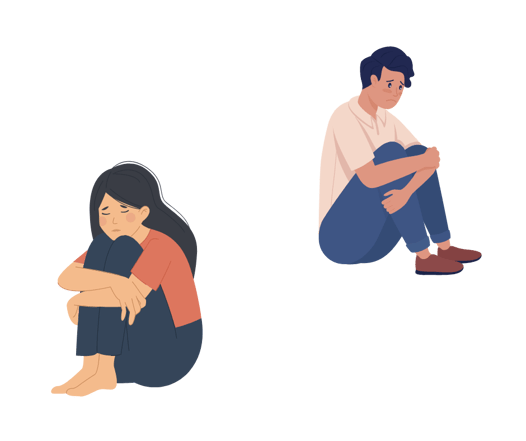Work design looks at four workplace elements: the work, work systems, the physical working environment, and the workers and people in the organisation.
- The work – This looks at how work and individual tasks are performed, including their physical, mental and emotional demands; their duration, frequency and complexity; and their context.
- The work systems – These support the organisational processes and activities and include information, technology, business management processes, products and services, supply chains and people, including customers, clients and other resources.
- The physical working environment – This includes plants, equipment, materials and substances used, and vehicles, buildings and other structures considered workplaces.
- The workers – Looks at their physical, emotional and mental capacities, needs and experience.
People who provide advice on good work design include engineers, architects, ergonomists, information and computer technology professionals, occupational hygienists, organisational psychologists, human resource professionals, occupational therapists and physiotherapists.
Effective work design can transform a workplace in a variety of ways along the entire supply chain.
If good work design is carried out during the workplace conceptual and planning stages, you also have the best chance of finding ways to eliminate hazards, and mitigate risk and design inefficiencies.
However, ignoring good work design can potentially result in poor risk management and lost opportunities for workplace improvement. As well, it can be a breach of Work, Health and Safety laws.
The Principles of Good Work Design are summarised by Safe Work Australia in the diagram below, from their resource, Principles of Good Work Design – A work health and safety handbook.








